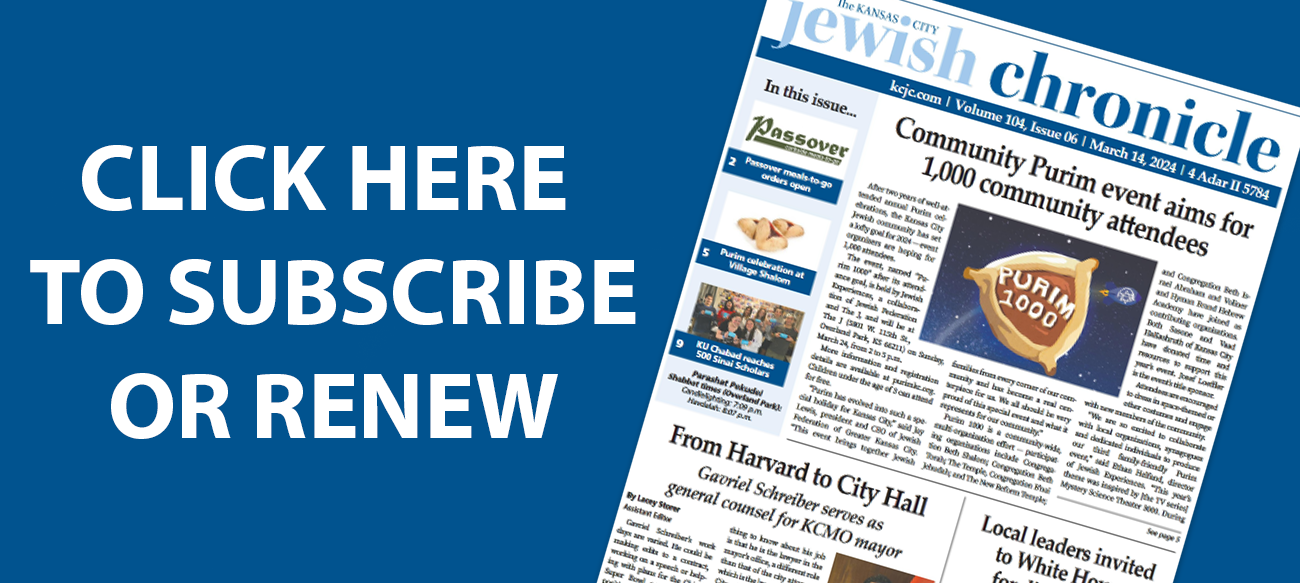If you’re reading this in The Jewish Chronicle, there’s a good chance you have never been inside a Christian Science Reading Room. But I have.
Last year, while researching a magazine article, I needed to consult a Christian Science publication. Rather than schlepping to the library, I remembered walking past a Christian Science Reading Room in Old Overland Park. Checking its website, I discovered that these storefronts were provided “as a resource for the community and welcome to all.” Figuring that included a seventy-something-year-old Jewish woman, I stopped by.
“Well, hello there,” said a woman with a halo of gray hair who looked like those women in Hallmark movies always arranging the flowers in the church. “What can I do for you?”
From the website, I knew she was here “to help in my study of the Bible.” Unable to quickly invent some biblically-based reason for my presence, I confessed, “I need to see some recent Christian Science Monitor Weekly issues for an article I’m writing.”
“Of course. I’d be happy to get them for you,” she said, evidently not the least bit disappointed in my lack of interest in biblical exegesis.
As she went to retrieve the magazines, I studied my surroundings. Originating in the 1800s as “dispensaries” of Christian Science treatment and literature, there are now more than 1,000 Reading Rooms worldwide selling Christian Science books, music and periodicals. With its wall of bookshelves and study carrels, this one appeared to be more library than bookstore; the sort of place where you automatically lower your voice. Indeed, silent contemplation was another stated purpose. Reading Rooms were meant to be “a quiet place to read, pray and get inspired.”
How lovely, I thought. But how very non-Jewish. Which made me wonder: What would a Jewish Reading Room look like? First and foremost, no Jewish anything would be quiet. I say this as sincere praise. Jews traditionally study Torah in pairs so they can talk about the text and together reach a better understanding of what they are reading. Any Jewish Reading Room would be called a Jewish Discussion Room. Or better yet, a Jewish Debating and Arguing Room.
Also, the Jewish clientele coming to such a facility would most likely be more interested in reading and discussing contemporary books than the Bible. As a former public librarian, I can attest that the Christian Bible section in a library constantly needed reshelving, while Jewish texts went untouched for weeks. Jewish-related fiction and non-fiction books, however, were routinely rummaged through.
And in the Jewish facility, the kindly lady greeting guests would be replaced with a boisterous balabusta foisting bagels on visitors. “Come have something to eat,” she would say, “You look hungry,” even to those holding take-out boxes from the Upper Crust pie shop down the street.
A canister for donations would be placed next to the coffee station and the purchasing opportunities throughout would be featured. Prices would be prominently displayed on the material for sale, with discounts marked on each offered. Woody Allen had it right when he said the ultimate sin for Jews is to pay retail.
Along with books, the walls and available surfaces would be adorned with plenty of plaques. From the water fountain to the magazine rack, donors’ names would be prominently displayed.
And, of course, frequent fundraisers would be held to underwrite this venture. Which of the myriad Jewish organizations would be responsible for funding this operation would be hotly debated. So contentious would be this issue, a splinter group would likely be formed, with the dissenting group setting up their own Reading Room next door. In time that one would divide again, so there would be three Jewish Rooms. As the classic joke about synagogues has it, everyone would have “mine, theirs, and the one they wouldn’t step foot in.”
All of them would be tumultuous, noisy places. Which would be okay. Because anyone needing some peace and quiet could always seek out a Christian Science Reading Room.
Nancy Kalikow Maxwell is a Kansas City native and award-winning author. Her work has appeared in Hadassah Magazine, The Forward, and other publications you’ve never heard of. Her latest book, “Typically Jewish,” is available through the Jewish Publication Society or Amazon.


